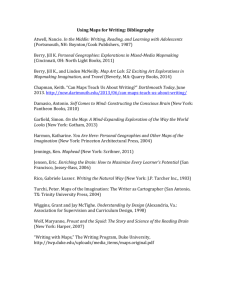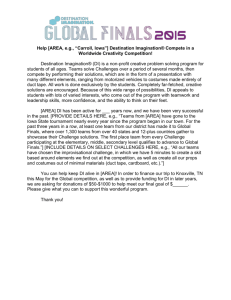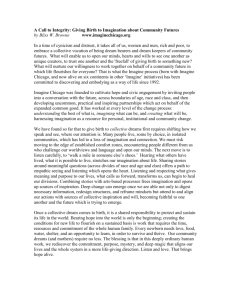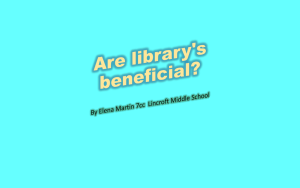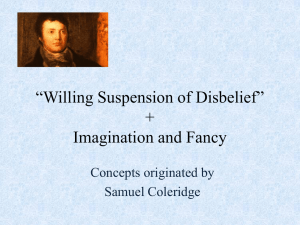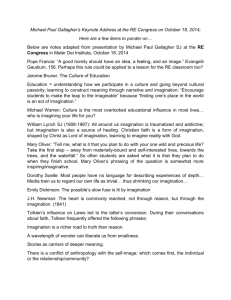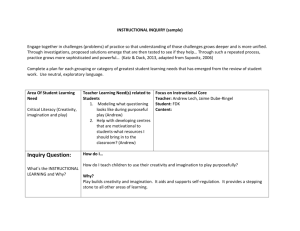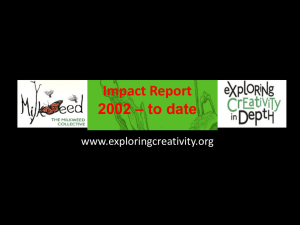The Dichotomy of Imagination
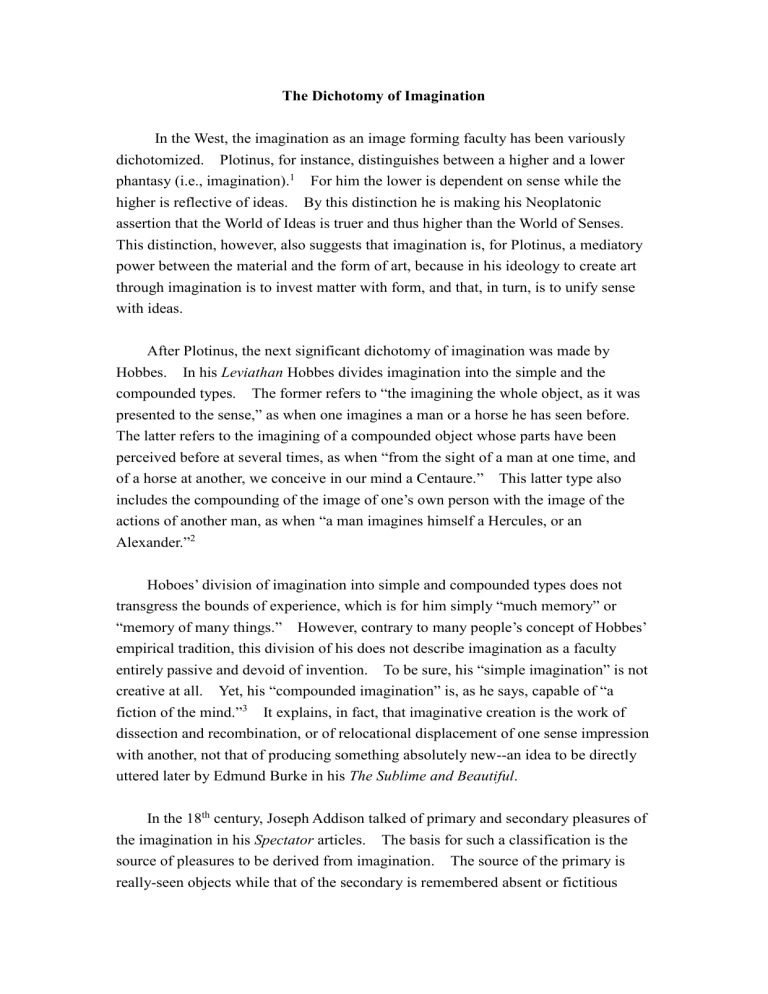
The Dichotomy of Imagination
In the West, the imagination as an image forming faculty has been variously dichotomized. Plotinus, for instance, distinguishes between a higher and a lower phantasy (i.e., imagination).
1
For him the lower is dependent on sense while the higher is reflective of ideas. By this distinction he is making his Neoplatonic assertion that the World of Ideas is truer and thus higher than the World of Senses.
This distinction, however, also suggests that imagination is, for Plotinus, a mediatory power between the material and the form of art, because in his ideology to create art through imagination is to invest matter with form, and that, in turn, is to unify sense with ideas.
After Plotinus, the next significant dichotomy of imagination was made by
Hobbes. In his Leviathan Hobbes divides imagination into the simple and the compounded types. The former refers to “the imagining the whole object, as it was presented to the sense,” as when one imagines a man or a horse he has seen before.
The latter refers to the imagining of a compounded object whose parts have been perceived before at several times, as when “from the sight of a man at one time, and of a horse at another, we conceive in our mind a Centaure.” This latter type also includes the compounding of the image of one’s own person with the image of the actions of another man, as when “a man imagines himself a Hercules, or an
Alexander.”
2
Hoboes’ division of imagination into simple and compounded types does not transgress the bounds of experience, which is for him simply “much memory” or
“memory of many things.” However, contrary to many people’s concept of Hobbes’ empirical tradition, this division of his does not describe imagination as a faculty entirely passive and devoid of invention. To be sure, his “simple imagination” is not creative at all. Yet, his “compounded imagination” is, as he says, capable of “a fiction of the mind.”
3
It explains, in fact, that imaginative creation is the work of dissection and recombination, or of relocational displacement of one sense impression with another, not that of producing something absolutely new--an idea to be directly uttered later by Edmund Burke in his The Sublime and Beautiful .
In the 18 th
century, Joseph Addison talked of primary and secondary pleasures of the imagination in his Spectator articles. The basis for such a classification is the source of pleasures to be derived from imagination. The source of the primary is really-seen objects while that of the secondary is remembered absent or fictitious
objects. This assortment serves to explain people’s difference of taste, besides calling our attention to the fact that imagination works not only in the writer but also in the reader--a fact the reader-oriented critics of our time have given special heed to.
The Scottish philosopher Dougald Stewart is one of the first to use fancy and imagination to designate two related sorts of the same image-forming faculty. He ascribes imagery wholly to “fancy,” saying that it is the power which “supplies the poet with metaphorical language,” while, freeing “imagination” from its close association with the image, he calls the imagination the power that “creates the complex scenes he [the poet] describes and the fictitious characters he delineates,” as illustrated in Milton’s Eden, Harrington’s Oceana, and Shakespeare’s Falstaff or
Hamlet.
4
This differentiation between fancy and imagination is in essence little different from Hobbes’ division of simple and compounded imagination. Yet,
Stewart is here confined to the realm of literature, as he talks solely of metaphorical language and scenes and characters, instead of just the image of a man or a horse and the image of a Centaur or a Hercules in a scene. More importantly, he makes us realize that the image-forming faculty can deal with either linguistic or extralinguistic matters (arranging scenes and delineating characters are extralinguistic imagination).
The most impressive Romantic who dichotomizes the image-forming faculty by using the names of fancy and imagination is of course S. T. Coleridge. But before
Coleridge’s dichotomy appeared in Biographia Literaria (1817), his friend
Wordsworth had made his own dichotomy in his Preface to Poems (1815). The two
Romantics’ ideas of fancy and imagination are quite different and their respective points have been subject to various interpretations and ample arguments. To speak summarily, for Wordsworth “Fancy is given to quicken and to beguile the temporal part of our nature, Imagination to incite and to support the eternal.--Yet is it not the less true that fancy, as she is an active, is also, under her own laws and in her own spirit, a creative faculty.”
5
In contrast, regarding imagination as the only creative power, Coleridge thinks of fancy as merely a passive, associative, rather than creative, faculty, for, as he says, it is “indeed not other than a mode of Memory emancipated from the order of time and space” and it must needs “receive all its materials ready made from the law of association.”
6
Actually, neither Coleridge’s nor Wordsworth’s distinction between fancy and imagination makes any great sense in terms of literary creation. What really counts is Coleridge’s further dichotomy of imagination into the primary and the secondary types:
The primary IMAGINATION I hold to be the living Power and prime Agent of all human Perception, and as a repetition in the finite mind of the eternal act of creation in the infinite I AM. The secondary Imagination I consider as an echo of the former, co-existing with the conscious will, yet still as identical with the primary in the kind of its agency, and differing only in degree , and in the mode of its operation. It dissolves, diffuses, dissipates, in order to recreate; or where this process is rendered impossible, yet still at all events it struggles to idealize and to unify. It is essentially vital, even as all objects (as objects) are essentially fixed and dead. ( Biographia Literaria , chpt. 13)
This famous passage is indeed charged with philosophical depth, hence giving rise to difficulties of interpretation. In my book Imagination and the Process of Literary
Creation (1991), I have given some critics’ explications which may or may not be right. And I have given my own explication, which I dare to deem very sensible.
Basically I agree with most critics that Coleridge’s primary and secondary imagination ought to refer to the powers of human perception vs. artistic creation.
Nevertheless, I think the primary imagination can be exercised in two modes: either with or without the user’s conscious will. And it can result in either ordinary or extraordinary human perception, related respectively to what some psychologists call
“R-thinking” (reality-adjusted thinking) and “A-thinking” (autism).
7
In reality, the above-quoted passage of Coleridge’s is a description of two crucial stages in the process of artistic creation. The first stage is a pre-composition stage.
It is the stage when the poet is experiencing the world with his senses. In doing so the poet is actually perceiving something all the time with his primary imagination.
If he is perceptive enough, he may have the so-called insight or vision. But to beget an insight or vision, the primary imagination may need to become extraordinary. A gifted poet may easily get his primary imagination into an extraordinary state, because he is “sensitive” or has great sensibility. At times, the poet may even seek the aid of alcohol, opium, or any other stimulant to have his insightful or visionary imagination.
Anyway, the primary imagination is, doubtless, a pre-composition power employed to
“see into the life of things,” or, to use a common phrase, to “get ideas for writing.”
The second crucial stage of artistic creation is the stage when the poet sits down at his desk, using his secondary imagination together with his conscious will to
“recreate” the insight or vision or “idea” his primary imagination has obtained for him.
The work of this stage, as described in Coleridge’s famous passage, is clearly both analytic and synthetic. So, the secondary imagination is a composition power, with which the poet actualizes his idea or composes his poem. Without this imagination the poet is only a half poet, or only a poet to himself since he has not yet expressed his poetry in words.
If we read Coleridge’s famous definitions of the two sorts of imagination along with Wordsworth’s famous definition of poetry, my argument above will sound even more convincing. As we know, in his Preface to Lyrical Ballads , Wordsworth defines poetry as “the spontaneous overflow of powerful feelings,” and says “it takes its origin from emotion recollected in tranquility.” Now, when does the spontaneous overflow of powerful feelings occur? And when is emotion recollected in tranquility?
The poet’s powerful feelings overflow spontaneously when he is excited by the workings of his primary imagination, of course. And when the emotion is recollected in tranquility, the poet has somehow settled down working with his secondary imagination, to be sure. So, Wordsworth’s definition of poetry also comprises two crucial stages of poetic creation, echoing Coleridge’s definition of primary and secondary imagination.
After Wordsworth and Coleridge, no epoch-making dichotomy of imagination has been found again. But John Ruskin’s three modes (“Imagination Associative,”
“Imagination Penetrative,” and “Imagination Contemplative”), Irving Babbitt’s two classes (the ethical vs. the Arcadian or dalliant imagination), Samuel Alexander’s two types (the passive and the creative imagination), and Ernst Cassirer’s three kinds (“the power of invention, the power of personification, and the power to produce pure sensuous forms”) are among those recent classifications of imagination which may have uses of their own.
In my opinion, if we want to construct a system of dichotomies to fully explain the role of imagination in the entire process of literary creation, we must take into account at least the following points. First, we must distinguish the imagination used to beget ideas for writing from that used to express the ideas. Second, we must differentiate the imagination used to beget ordinary ideas from that used to beget insightful or visionary ideas. Third, we must tell apart the imagination used to deal with linguistic elements and that used to deal with extralinguistic elements. And finally, we must discriminate between the imagination used in direct contact with life and the imagination used in vicarious contact with life such as in reading a novel or in watching a movie. According to this scheme, then, we have ideational vs. technical
imagination (corresponding to Coleridge’s primary vs. secondary imagination); ordinary or plain imagination vs. extraordinary or visionary imagination; linguistic vs. extralinguistic imagination (dealing, respectively, with the sound, sense, and shape in language, and with such things as plot, characterization, setting, theme, motif, and imagery which are expressed through language); and direct vs. indirect imagination.
Obviously, the four dichotomies of imagination I make above are not purely my own thinking. They have in fact been considered directly or indirectly by previous thinkers, poets, or critics. I have said that Coleridge’s primary and secondary imagination is equivalent to my ideational and technical (or pre-compositional and compositional) imagination. The same dichotomy is in effect implied in James
Russell Lowell’s assertion that “The poet is he who can best see and best say what is ideal--what belongs to the world of soul and of beauty”
8
(italics mine). Likewise, my assumed contrast between ordinary and extraordinary imagination is implied in
Leslie Stephen’s (not to say Wordsworth’s) distinction between fancy and imagination:
“fancy deals with the superficial resemblances, and imagination with the deeper truths that underlie them.”
9
As to my idea of linguistic vs. extralinguistic imagination, it is already foreshadowed in Dougald Stewart’s ideas of fancy vs. imagination, as mentioned above. And finally in Addison’s differentiating primary from secondary pleasures of imagination is already seen my concept of direct vs. indirect imagination.
My ways of dichotomizing imagination are in truth influenced by some classical
Chinese critical ideas, too. In classical Chinese criticism, the term 神思 shen-ssu
(literally, “divine thinking”) and the term 比興 pi-hsing (literally, “comparing and exalting”) are roughly equal to what I call visionary imagination and technical imagination here.
10
But no matter from what sources I have drawn my dichotomies of imagination, I hope it is clear now that in the process of literary creation we do need various sorts of imagination to “read” life and “write” out our readings.
Notes
1.
This distinction is mentioned in Alex Preminger, ed., The Princeton Handbook of
Poetic Terms . But I can find only some hints of this distinction in Plotinus’s work. See Plotinus: The Six Enneads , tr. Stephen Mackenna & B. S. Page,
(Chicago & London: Encyclopaedia Britannica Inc., 1952).
2.
Leviathan , part Ⅰ , chapter 2. In the edition by C. B. Macpherson
(Harmondsworth, Middlesex, England: Penguin Books, 1968), p. 89.
3.
Ibid.
4.
Elements of the Philosophy of the Human Mind, Ⅰ , pp. 3, 5, & 8. Quoted in
Preminger, p. 100.
5.
See John Spencer Hill, ed., The Romantic Imagination (London: The MacMillan
Press, 1977), p. 66.
6.
See J. Shawcross, ed., Biographia Literaria (Oxford: Clarendon Press, 1954), p.202.
7.
See Peter McKellar, Imagination and Thinking: A Psychological Analysis (New
York: Basic Books Inc., 1957), p. 4 ff.
8.
“The Function of the Poet,” in
Literary Criticism: Pope to Croce , eds., G. W.
Allen & H. H. Clark, (Detroit: Wayne State U. P., 1962), p. 421.
9.
Hours in Library , quoted in Frederick Clarke Prescott, The Poetic Mind (Ithaca,
N. Y.: Great Seal Books, 1922), p. 142.
10.
See Liu Hsieh, The Literary Mind and the Carving of Dragons , tr. Vincent
Yuchung Shih, (Taipei: Chung Hua Book Co., 1975), pp. 216, 217, 276 & 278.
There have been various interpretations of the meanings of pi and hsing , but they do not affect the basic fact that they are technical matters used in imaginative writing.
